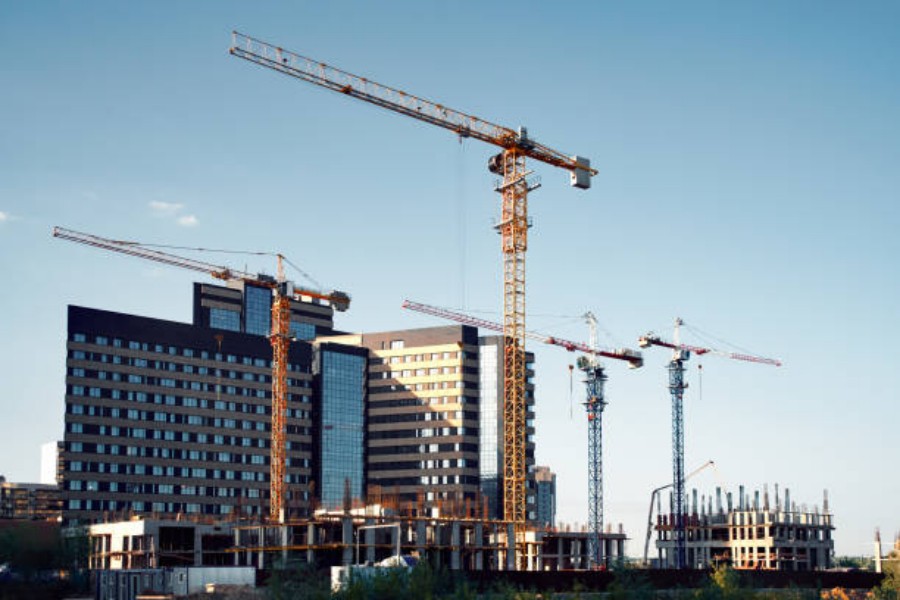Introduction: What Is a Double Girder Crane?
When it comes to moving heavy loads in construction sites, warehouses or factories, cranes are an essential tool. And among the different types of cranes available, double girder cranes stand out as one of the most reliable and efficient options. But what exactly is a double girder crane, and how does it work? In this article, we'll explore the basics of double girder cranes, their advantages, and their key features.
The Definition of Double Girder Crane
A double girder crane is a type of overhead crane that features two bridge girders supported by end trucks. The girders are typically designed as box beams, and they provide a more stable and flexible lifting option than single girder cranes. The trolley and hoist are mounted between the two girders, which allows for improved precision and heavier lifting capacity.
Advantages of Double Girder Cranes
There are several benefits to using double girder cranes over other types of cranes, such as:
- Higher capacity: Double girder cranes are capable of handling heavier loads, making them ideal for industrial and construction applications.
- Increased durability: The double girder design provides greater stability and support than single girder cranes, which translates to a longer lifespan in harsh environments.
- Better Hook Height: The hoist unit on a double girder crane can be mounted much higher than a single girder crane, which allows for greater lifting height and clearance.
- Improved Safety: Double girder cranes are equipped with a range of safety features, such as load limiters, anti-collision devices, and overload protection.
- Greater Flexibility: Double girder cranes can be customized and adapted to specific requirements, making them suitable for a wide range of industrial and construction applications.
The Key Features of Double Girder Cranes
Double girder cranes come with a range of features that ensure their smooth and safe operation. Some of these features include:
- End trucks: These are the components that support and guide the bridge girders along the runway.
- Trolley: The trolley is the component that travels along the girders and carries the hoisting mechanism.
- Hoist: The hoist is the device that allows the crane to lift and lower loads. It typically comprises of a motor, gearbox, brake, and drum system.
- Radio controls: Many modern double girder cranes come with remote controls that allow the operator to control the crane from a safe distance.
- Load sensors: These sensors help to monitor the load being lifted and ensure that it remains within the safe working limits of the crane.
The Applications of Double Girder Cranes
Double girder cranes are used in a wide range of industries and applications. Some of the most common applications include:
- Heavy manufacturing and construction
- Steel mills and metalworking facilities
- Shipbuilding and dockyards
- Automotive manufacturing
- Paper mills and recycling plants
- Power generation and energy facilities
The Maintenance of Double Girder Cranes
Proper maintenance is essential to ensure the smooth and safe operation of double girder cranes. Some common maintenance practices for double girder cranes include:
- Regular inspections: Cranes should be inspected regularly for any signs of damage, wear and tear or any mechanical issues.
- Lubrication: All moving parts should be lubricated regularly to prevent rust, corrosion or binding.
- Record keeping: Maintenance records should be kept to document when maintenance is performed and to track any issues that may develop over time.
The Cost of Double Girder Cranes
The cost of a double girder crane depends on various factors such as lifting capacity, span, and customization. On average, a standard double girder crane may cost between $20,000 and $150,000. However, the long-term benefits of using double girder cranes often outweigh the initial investment.
Conclusion
Double girder cranes are a robust and versatile option for lifting and moving heavy loads. They offer a range of benefits including increased durability, greater lifting height, and improved safety. By understanding the key features of double girder cranes, their applications, and maintenance requirements, you can make informed decisions about whether they are the right fit for your particular needs.

